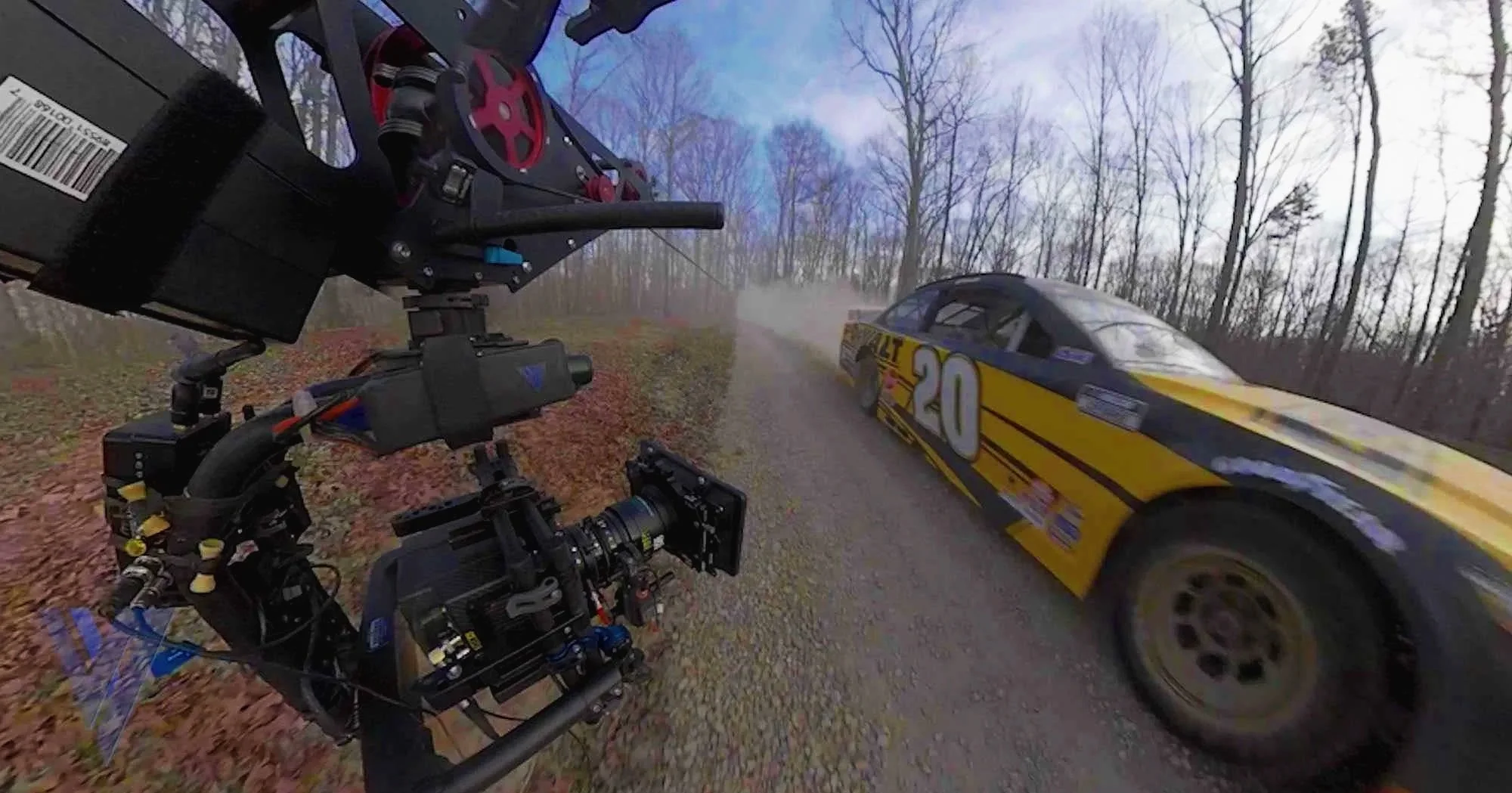
CABLE CAM
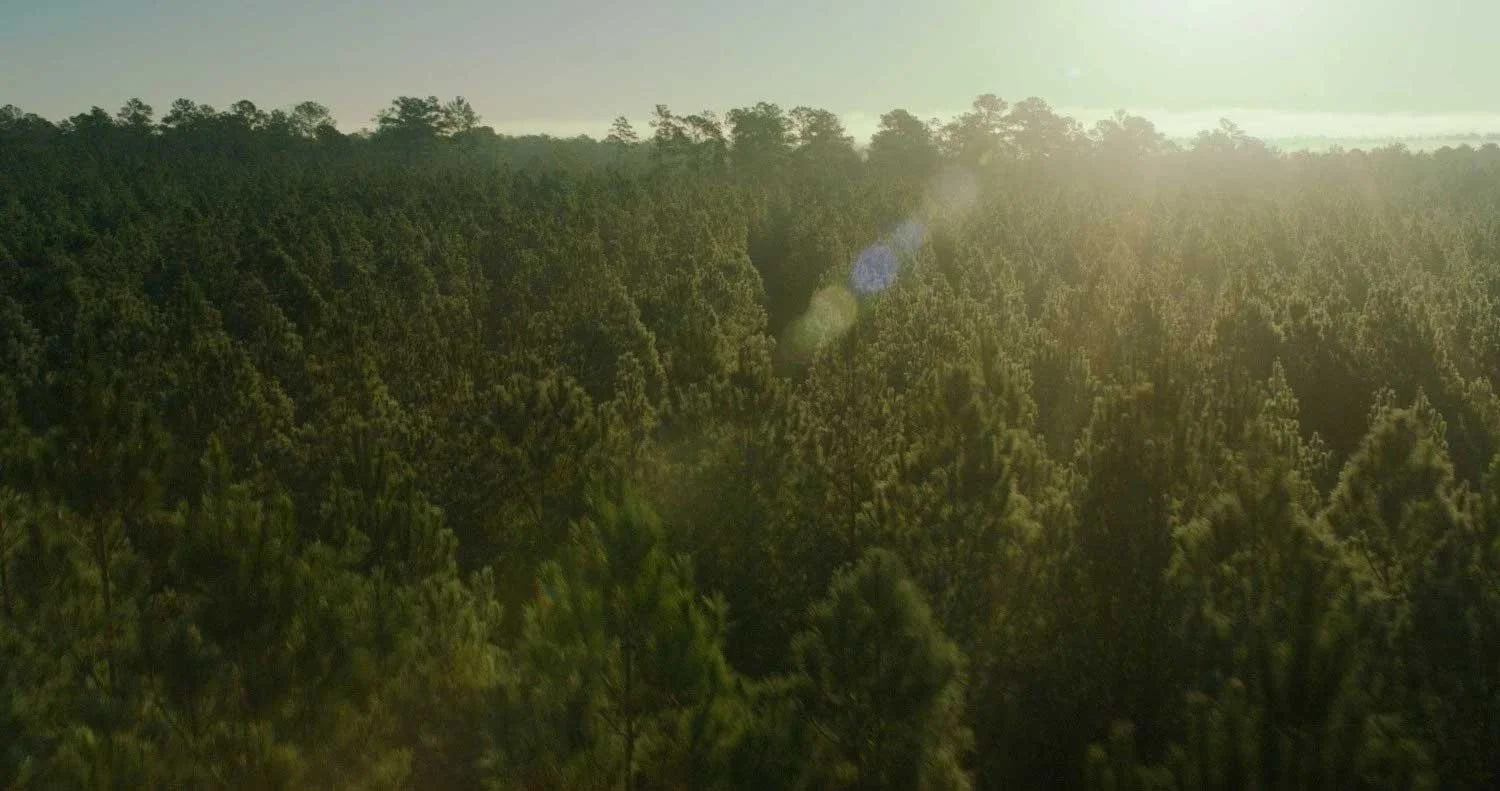
FEATURES
Our FlyLine Cable Cam system enables us to achieve cinematic, precision-controlled camera movement in environments where drones or car-mounted systems may not be practical or permitted. This versatile system is ideal for carrying our MōVI Pro gimbal through a wide range of challenging locations:
Forests
Ravines
Close to Water
Over People
Indoors
Audio-Sensitive Environments
Extra Close Proximity to Subjects
Motion Control
Precision and repeatability are essential in professional filmmaking, and our clients frequently rely on us for perfectly consistent camera moves. The FlyLine Cable Cam system delivers both, offering ultra-smooth control for shots that demand exact motion paths. Capable of crawling as slowly as half an inch per second or flying at speeds up to 40 mph, the system adapts seamlessly to the creative and technical needs of each production.
Our cable cam integrates advanced motion control technology, allowing us to program precise in- and out-points along the line. This not only ensures consistent, repeatable movement but also adds an extra layer of safety and protection for both the cable cam and the camera gimbal system, even in complex or high-risk environments..


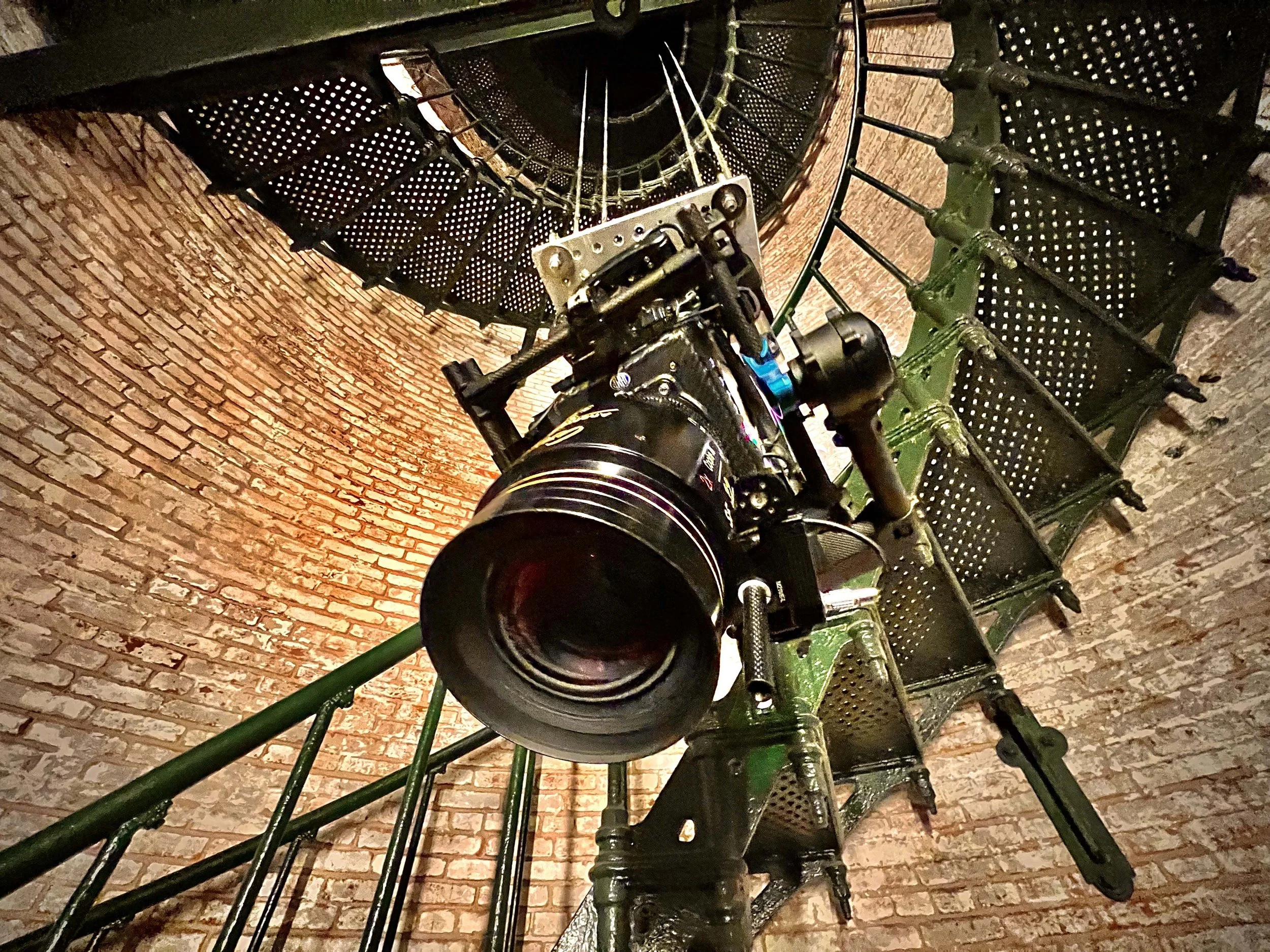


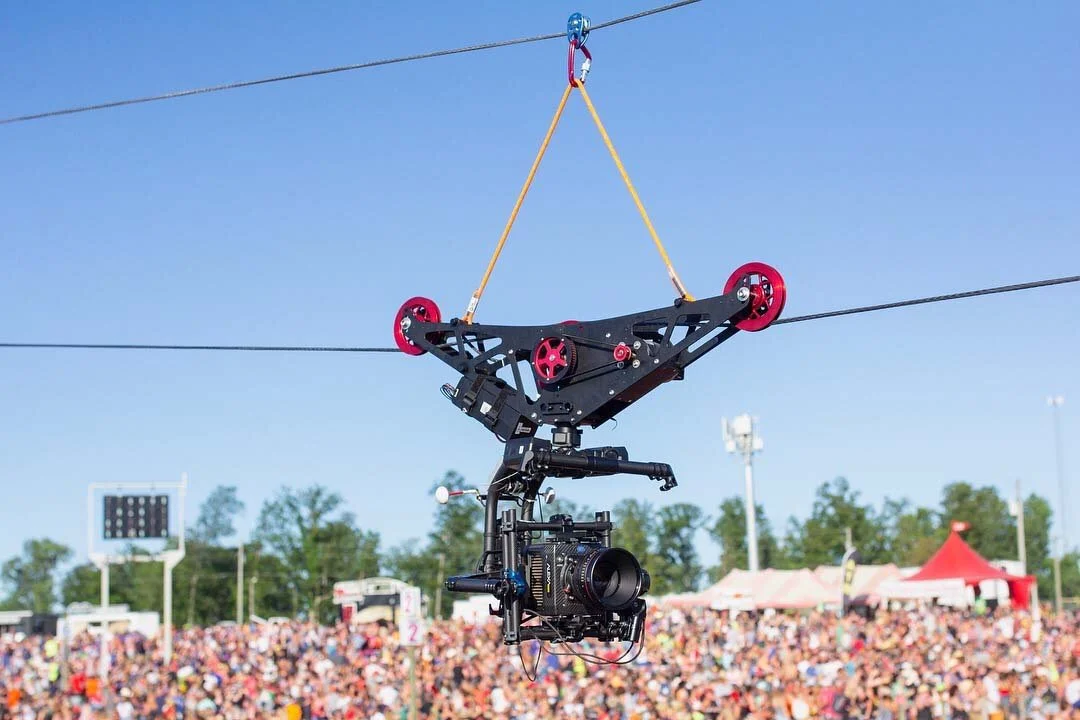







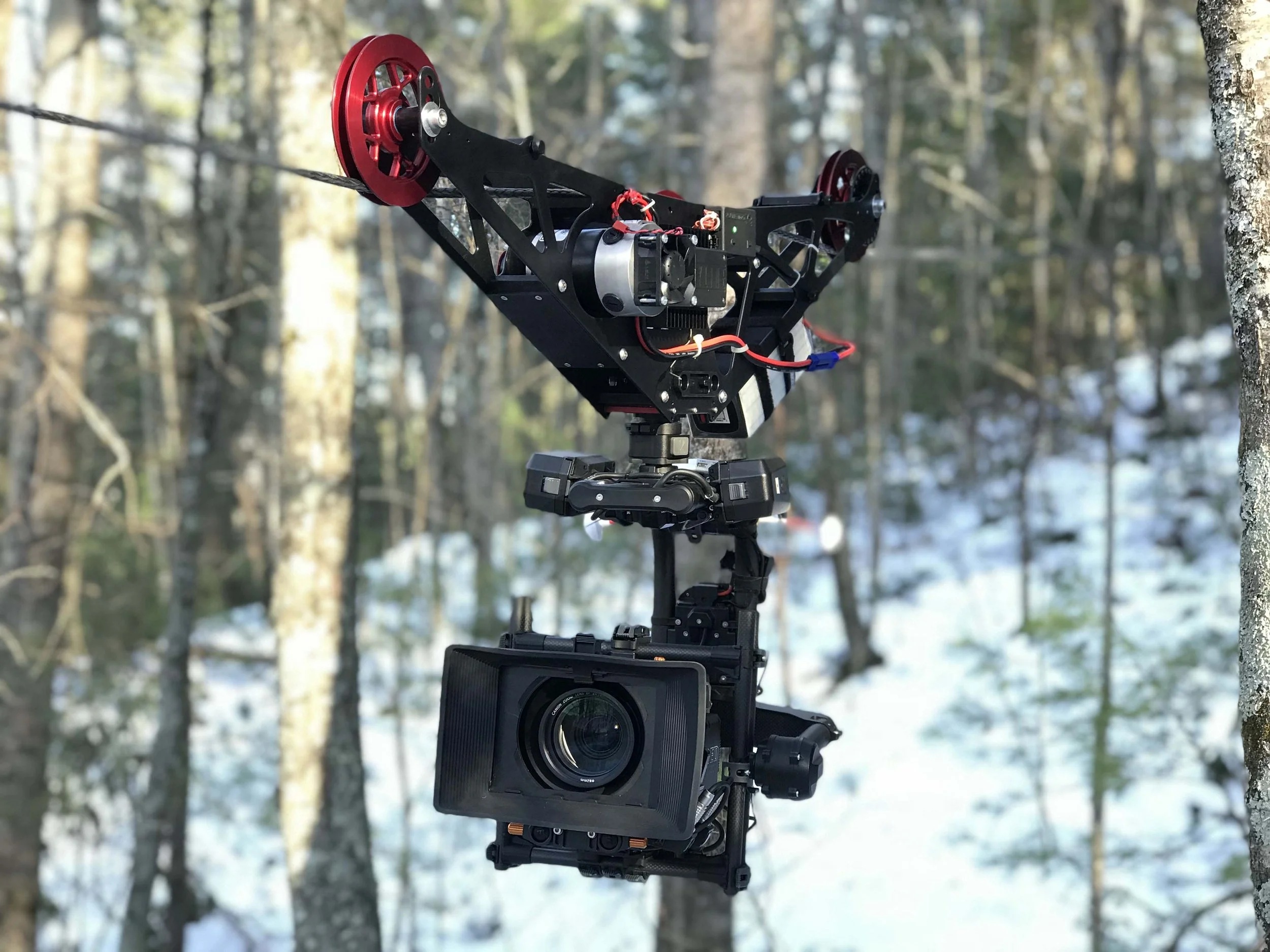




STRENGTH
At VidMuze Cinema, we’re committed to delivering the highest level of safety and reliability on every production. That’s why we use only the strongest, industry-proven materials for our cable cam systems, ensuring total confidence for both our team and our clients.
Our system runs on 8mm Dyneema, a high-performance synthetic line with an impressive 12,000-pound tensile strength. Since our cable cam operates at a maximum load of just 1,500 pounds, this provides a significant safety margin, guaranteeing durability, stability, and peace of mind throughout every shoot.
Other features of Dyneema:
Up to 600 ft long cable runs.
Very high strength to weight ratio.
Very high abrasion resistance.
0.08% stretch rate.
High UV resistance.
Floats & does not absorb water.
ENDURANCE
Our cable cam system is powered by a 6S 22.2V LiPo battery, delivering the performance and reliability needed for demanding productions. This setup allows us to carry camera packages up to 60 pounds while maintaining speeds of up to 40 mph. The system’s high-torque DC motor is managed by a 50-amp electronic speed controller (ESC) to ensure precise motion and smooth acceleration. To maintain peak efficiency during extended operation, the system is equipped with a built-in 24V cooling fan, effectively dissipating heat and ensuring consistent, reliable performance throughout the shoot.
Features
Speeds up to 40mph
Cooling Fan
Carry up to 60 pounds payload
LiPos to provide hours of run time.

Cable Cam Solutions by VidMuze Cinema
Precision and Fluidity in Camera Movement for Film, Television, and Commercials
At VidMuze Cinema, we offer top-notch cable cam solutions designed to provide exceptional stability, control, and creative versatility for your production. Our advanced cable cam system enables seamless, repeatable camera movements in places where drones, cranes, or vehicles are not viable — empowering filmmakers to achieve dynamic aerial shots indoors, above crowds, through wooded areas, or across rugged landscapes. Whether you're working on a feature film, a TV series, or a national advertisement, our specialists in camera movement guarantee that every shot is captured with flawless cinematic precision and safety.
Benefits of Using a Cable Cam
Ideal for Confined Spaces
Cable cams shine in locations where drones and camera cars are impractical, such as indoor sets, dense forests, busy urban areas, and over crowds or bodies of water. The cable system is securely suspended and anchored along its route, ensuring complete control even in environments with flight restrictions.
Smooth and Consistent Motion
Experience buttery-smooth, stabilized shots that are perfect for tracking action scenes, live events, or repeated motion passes for visual effects. Each movement can be precisely programmed for speed and start/stop points, guaranteeing dependable results.
Safe and Predictable Camera Operations
Unlike free-flying drones, cable cams follow a tethered and predictable path, maximizing safety around actors, vehicles, and large gatherings. This makes them a preferred option for productions that require both cinematic quality and on-set safety.
Robust Payload Capacity and Speed
Our cable cam system can support full-sized cinema camera setups weighing up to 60 lbs and can achieve speeds of up to 40 mph. From high-octane chase scenes to gentle dolly-style movements, we customize each configuration to meet your production's specific visual aspirations.
Reliability in Any Setting
Utilizing an 8 mm Dyneema line rated for 12,000 lbs, our professional-grade cable rig offers outstanding strength, minimal stretch, and resistance to various weather conditions. Coupled with cutting-edge stabilization and motion-control technology, we ensure dependable performance in any setup — from mountain ridges to sound stages.
Optimal Uses for Cable Cams
Cable cams are ideally suited for:
Live events, concerts, and sports coverage
Narrative films and television production
Action scenes, car chases, and stunts
Outdoor commercial shoots in forests, rivers, and urban settings
Indoor tracking shots on stages and sets
Whether filming in Charlotte, Asheville, Atlanta, Charleston, or across the nation, VidMuze has the expertise and equipment to create cinematic motion that enhances your storytelling.
Why Choose VidMuze Cinema for Cable Cam Solutions
At VidMuze Cinema, our passion lies in camera movement. Our experienced team has extensive knowledge in operating drones, cable cams, arm cars, and FPV systems for high-end film and television projects. We excel at integrating cable cam movements safely and creatively within complex production environments.
With locations throughout the Southeast, our crew offers comprehensive support — from pre-production planning and rigging logistics to on-set operations and safety management. By choosing VidMuze, you’re not just acquiring equipment; you’re partnering with a dedicated team focused on delivering cinematic excellence, reliability, and precise storytelling.


